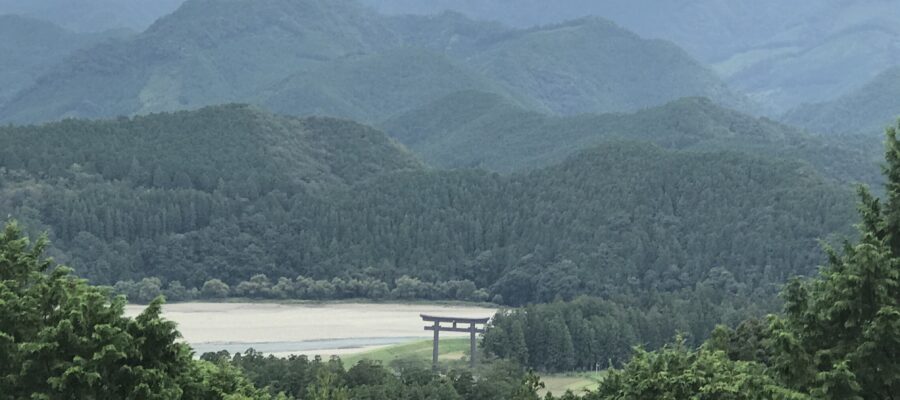展望ポイントを目指して脇道を行く
九鬼ヶ口関所を越えてしばらく先に進むと、ガイドさんが脇道に入りますと言ってきました。どうしてかと聞くと、脇道の展望ポイントから熊野本宮大社が見えるそうです。相変わらず、道の両横にはシダ類が茂っています。すれ違う人々も時々います。
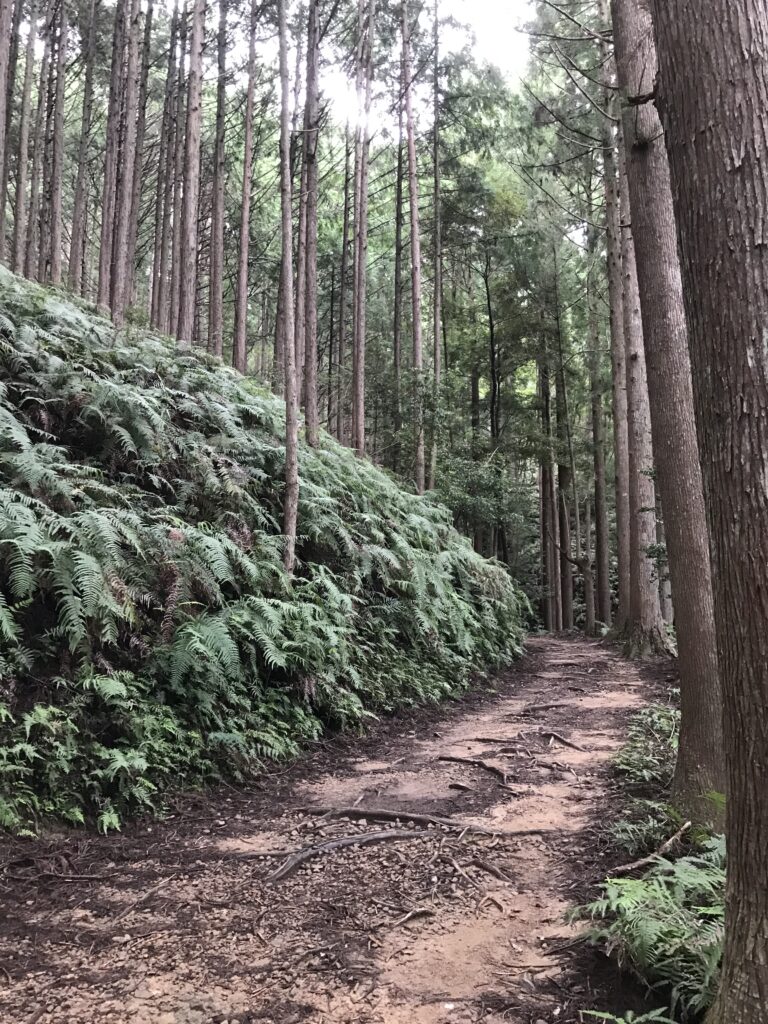
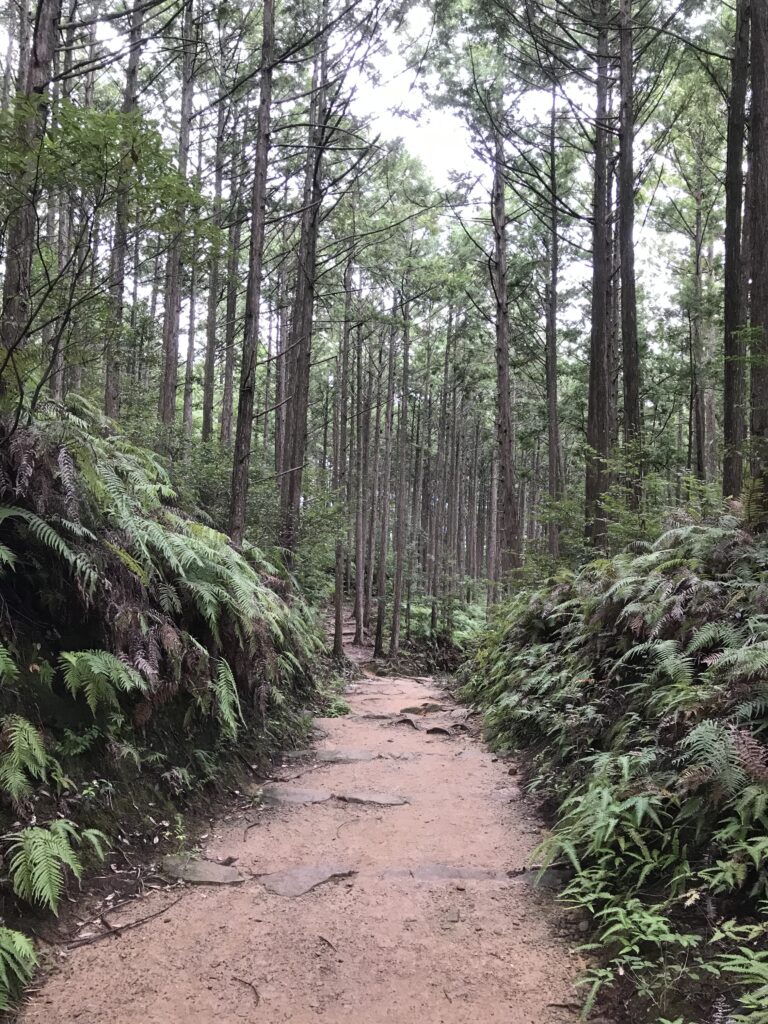
遥か遠くに大鳥居が見える!
展望ポイントについて下界を見ると、遠くにかの有名な黒い大鳥居が見えます。高さが約34m、幅は約42mの日本一大きい鳥居です。肉眼でも見えますがかなり小さく見えるので、まだまだ距離はありそうです。昔の人は、ここで、あの大鳥居を見ると、ようやく来たと涙を流したのかも知れません。巡礼って、やっぱり険しい道を歩いてこそ感動も深まるのでしょう。
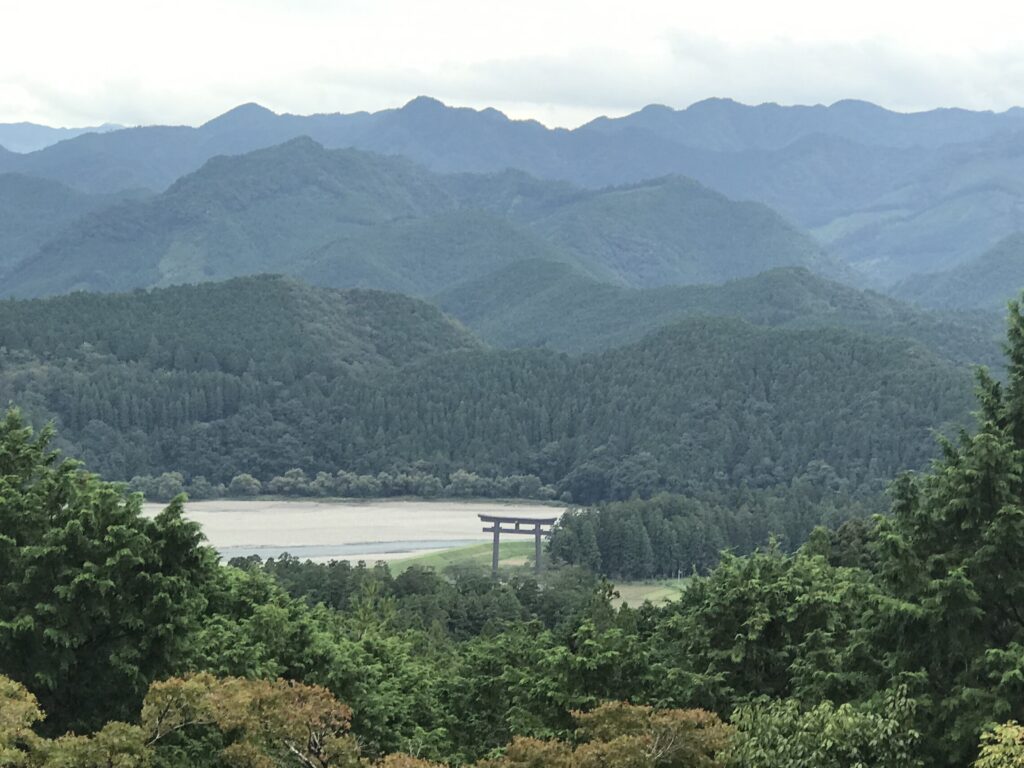
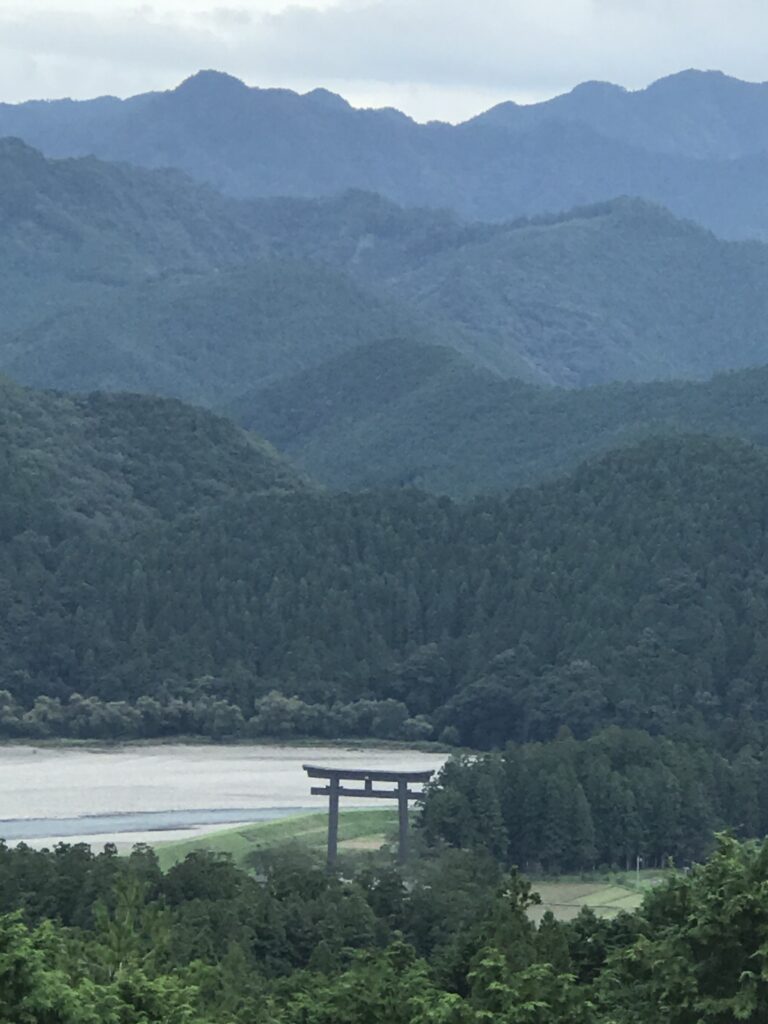
まだまだ、道は続きます。道に敷き詰める石の割合が増えてきます。どんどん人の住む場所に近づいている雰囲気がします。ただし、伊勢路ほどの雨がないのか、苔むした道ではありません。
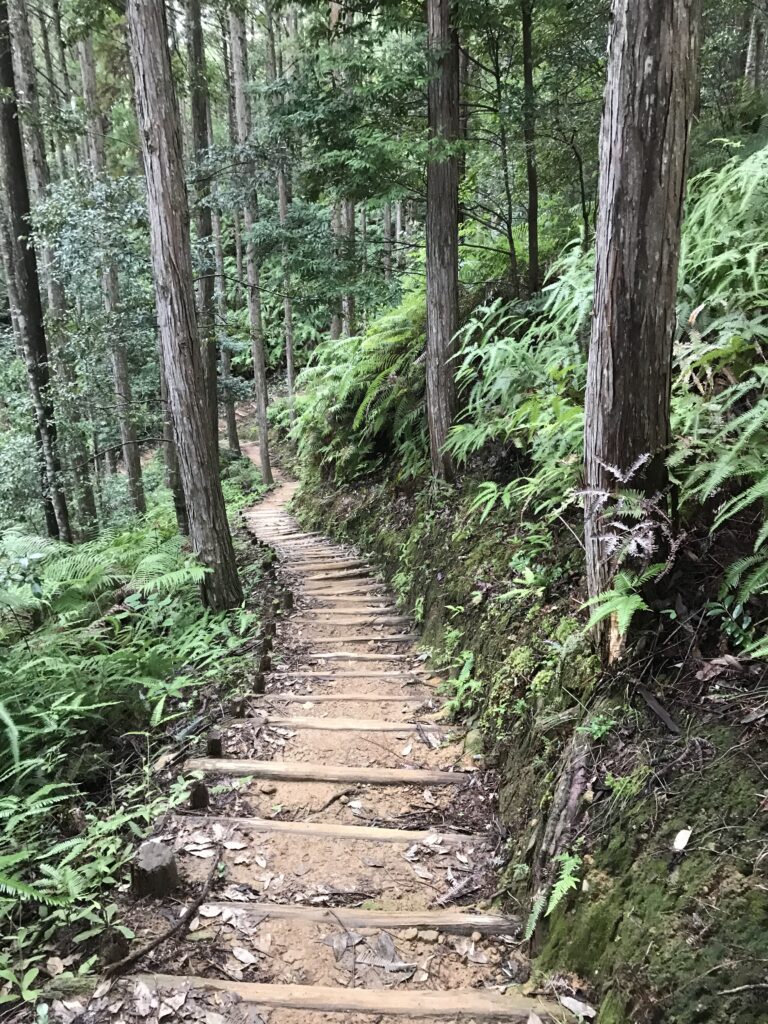
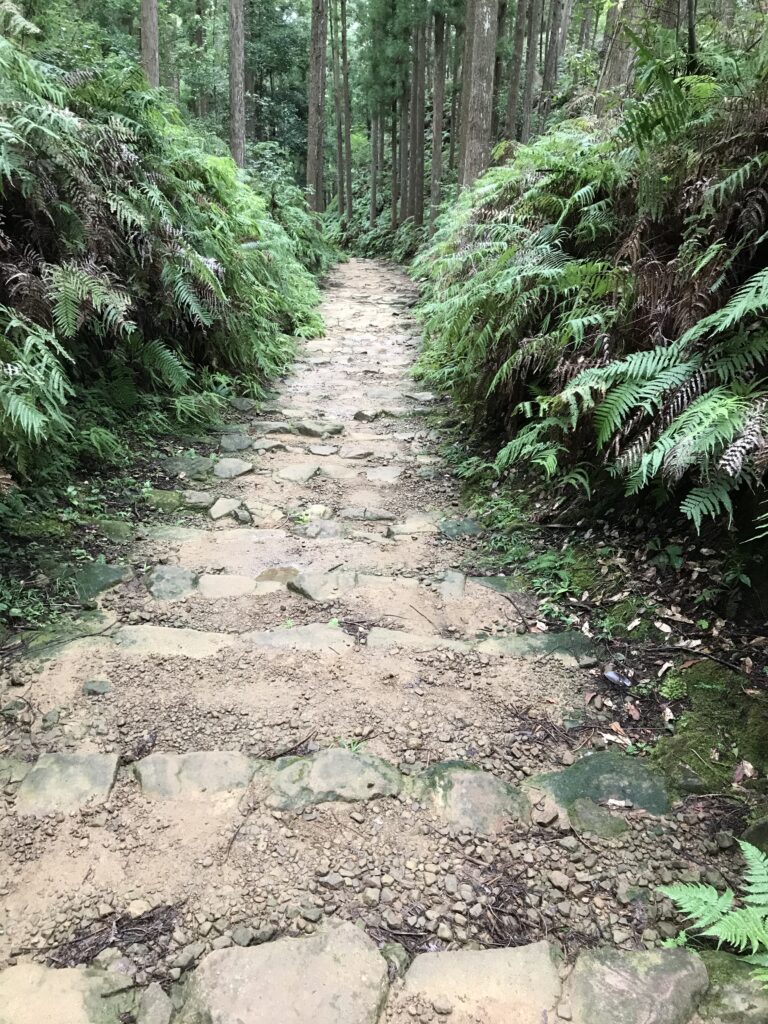
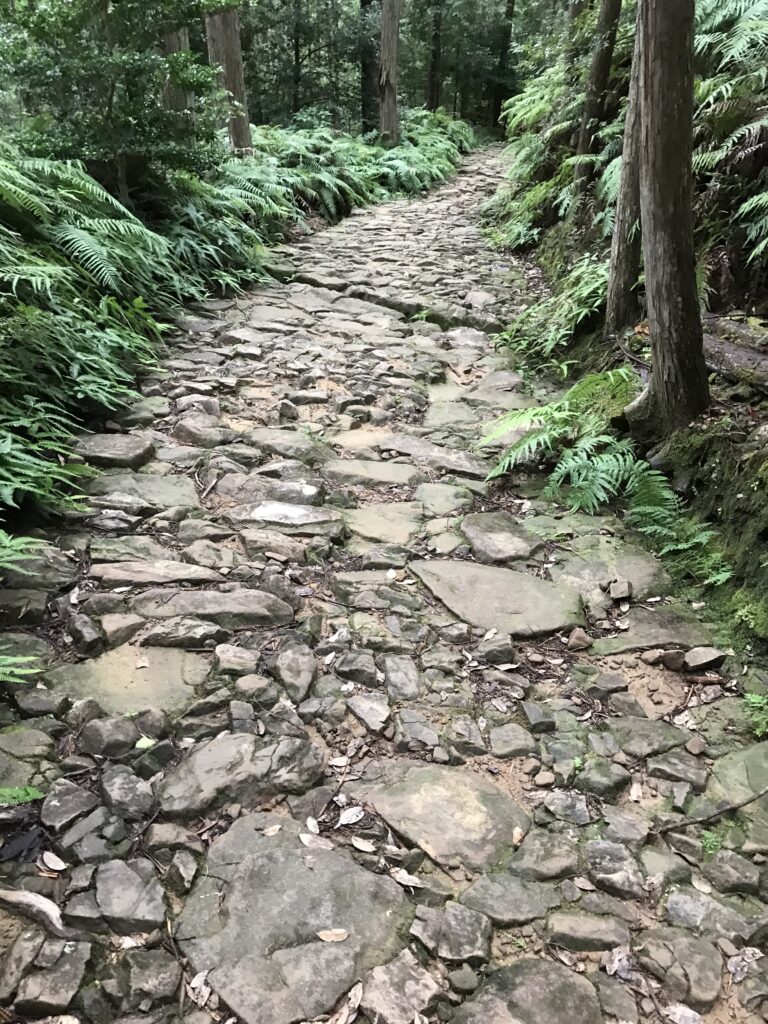
舗装された道に出ました、あと少し!
かなり下って、再び舗装された道が出てきました。近くには祓殿王子があります。参拝前に身を清める場所としての役割を果たしていたそうです。無事に来れたことを感謝してお参りしました。解説を読むと、藤原定家が、この近くの地蔵堂で後鳥羽上皇の一行を待ち、本宮の神社に向われたそうです。
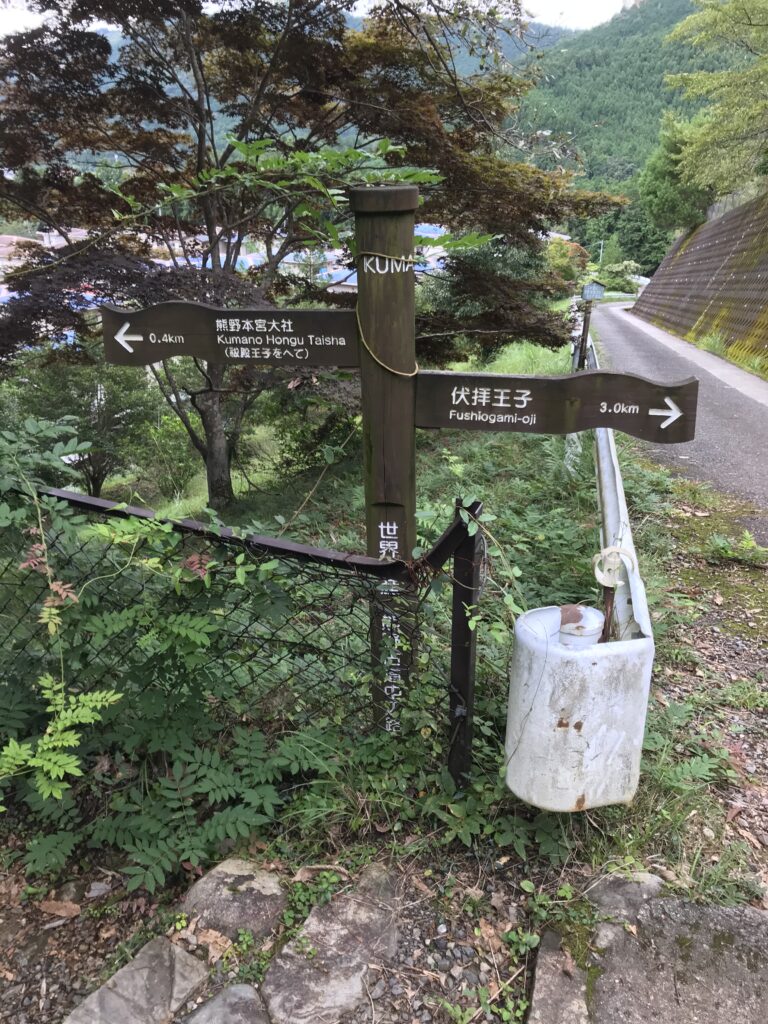
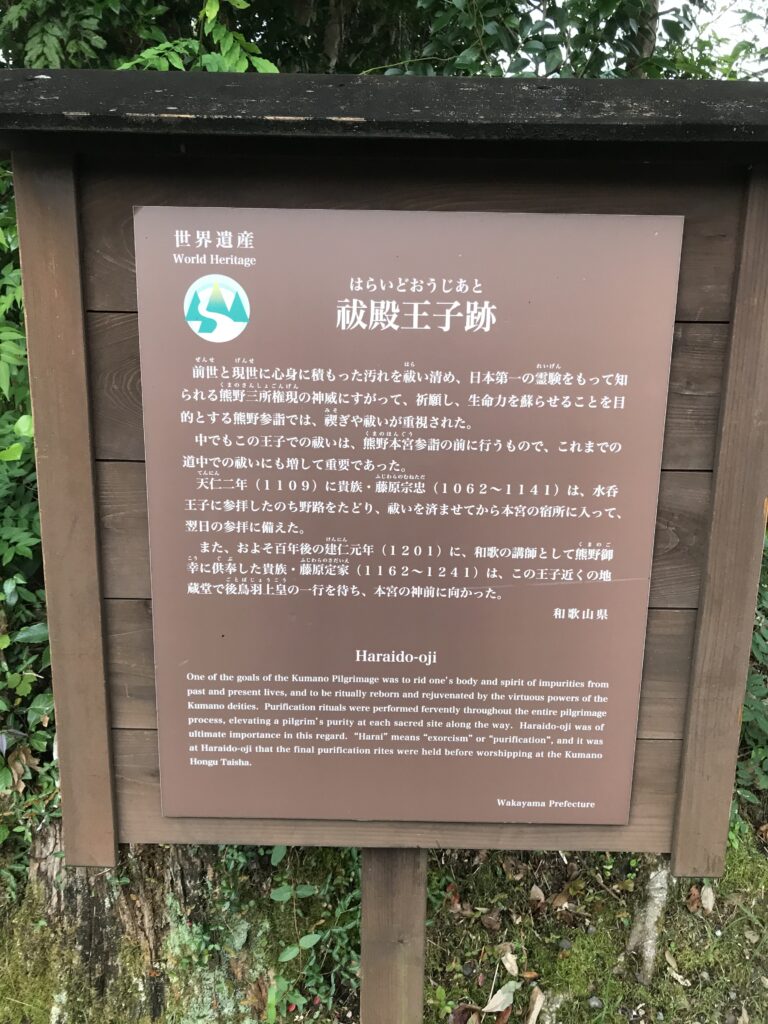
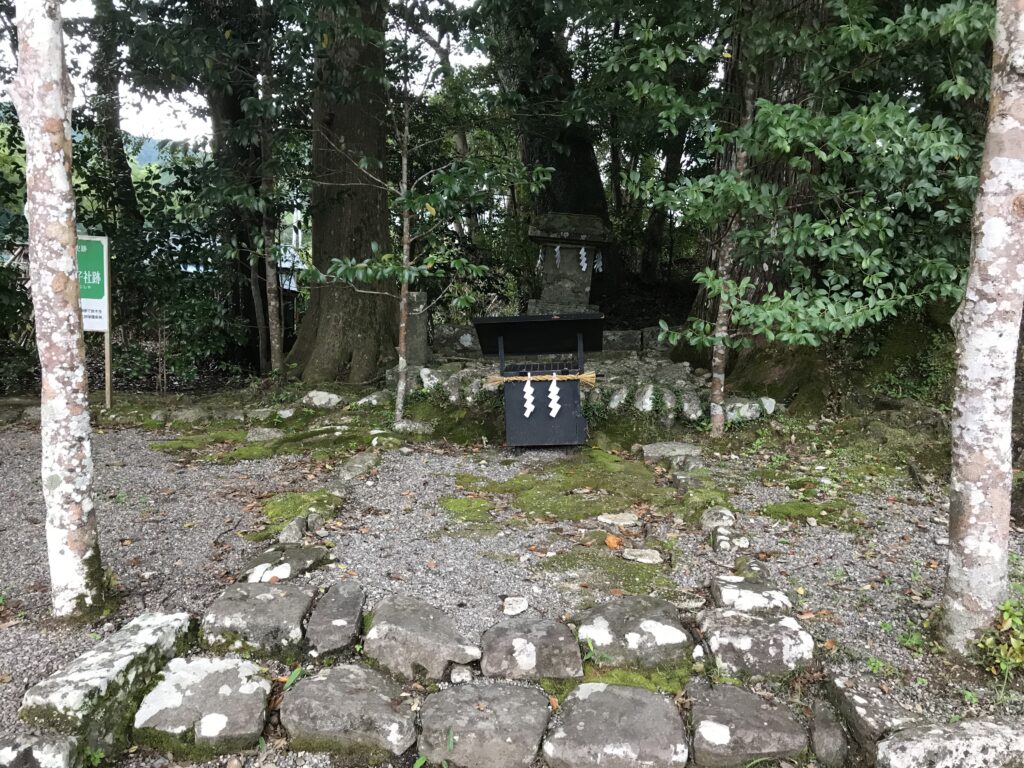
熊野詣に来た歴史上の有名な人物たちと同じように、ここでのお参りで身を清めました。そして祓殿王子を越えると、ようやく熊野本宮大社の境内に続く鳥居が目の前に現れました。(つづく)
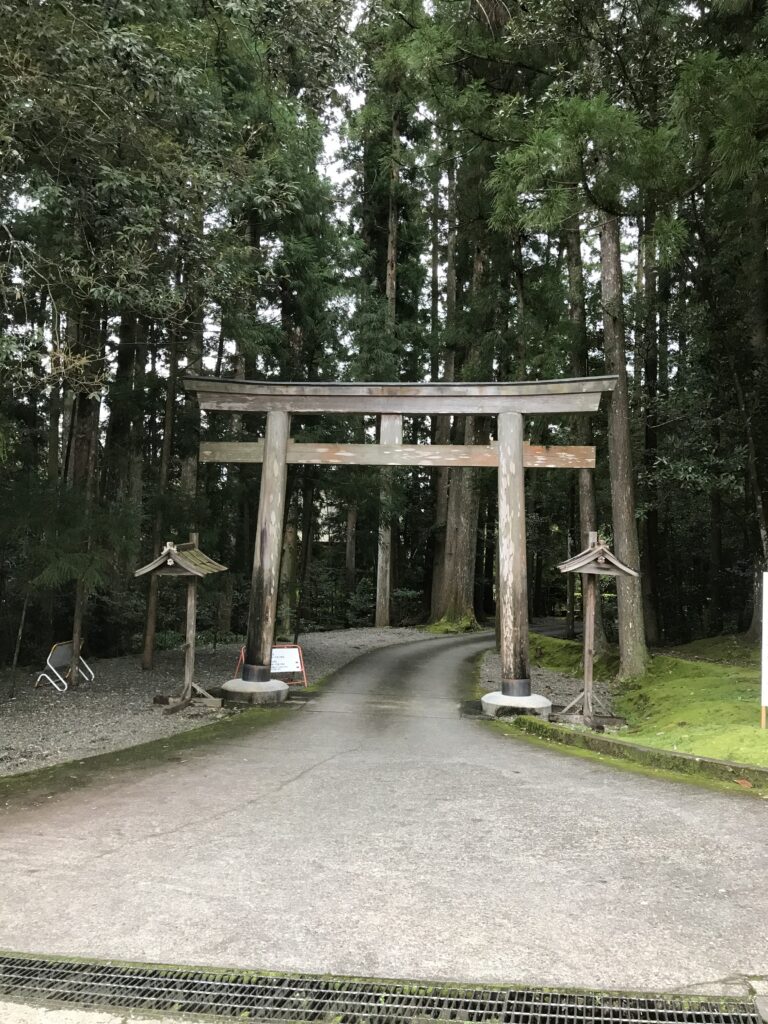
中辺路が紹介されている書籍
高木徳郎さんの「熊野古道を歩く 歴史の旅」に中辺路について紹介されています。
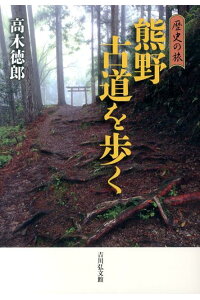
価格:2,750円
(2021/6/4 16:47時点)
感想(0件)
Kumano Kodo (Ancient Road) ①Nakahechi Road Ⅲ
(Kukigakuchi Pass ~ Kumano Hongu Grand Shrine ) (English)
Taking a side road to the observation point
When I crossed the Kukigakuchi Pass and continued on for a while, my guide told me to take a side road. When I asked him why, he said that I could see Kumano Hongu Grand Shrine from the observation point on the side road. As usual, ferns were growing on both sides of the road. Sometimes people pass each other.
I can see the Otorii gate in the distance!
When you get to the observation point and look down, you will see the famous black torii gate in the distance. It is the largest torii gate in Japan, about 34 meters high and 42 meters wide. You can see it with the naked eye, but it looks quite small, so there is still a long way to go. In the old days, when people saw the large torii gate, they may have shed tears, thinking that they had finally arrived. I guess pilgrimages are more moving when you have to walk on a steep path.
The path still continues. The percentage of stones paved on the road increases. It feels like it is getting closer and closer to a place where people live. However, the path is not as mossy as the Ise Road, perhaps because there is not as much rain.
I’m on a paved road, almost there!
After descending quite a bit, I came to a paved path again. Nearby, there is an oji called Haraidono. It used to serve as a place to purify oneself before worshipping. I thanked God that I had arrived safely and paid our respects. According to the explanation, Fujiwara no Teika (Japanese ancient famous poet) waited for Emperor Go-Toba’s delegation at the Jizo Hall near here before heading to the grand shrine.
Just like the famous historical figures who came to Kumano to pay homage to Kumano, I purified myself by visiting here. Then, after crossing the Haraidono Oji, the torii gate leading to the precincts of Kumano Hongu Grand Shrine finally appeared in front of me. (to be continued)
Kumano Kodo (Ancienne route) ①Nakahechi Road Ⅲ
(Col de Kukigakuchi ~ Grand sanctuaire de Kumano Hongu) (Français)
Prendre une route secondaire vers le point d’observation
Lorsque j’ai franchi le col de Kukigakuchi et que j’ai continué pendant un certain temps, mon guide m’a dit de prendre une route secondaire. Quand je lui ai demandé pourquoi, il m’a répondu que je pouvais voir le grand sanctuaire de Kumano Hongu depuis le point d’observation de la route secondaire. Comme d’habitude, des fougères poussaient des deux côtés de la route. Parfois, les gens se croisent.
Je peux voir la porte Otorii au loin !
Lorsque vous arrivez au point d’observation et que vous regardez en bas, vous apercevez au loin la célèbre porte torii noire. Il s’agit de la plus grande porte torii du Japon, d’environ 34 mètres de haut et 42 mètres de large. Vous pouvez le voir à l’œil nu, mais il semble assez petit, donc il y a encore beaucoup de chemin à parcourir. Autrefois, lorsque les gens voyaient la grande porte torii, ils versaient peut-être des larmes, pensant qu’ils étaient enfin arrivés. Je suppose que les pèlerinages sont plus émouvants quand on doit marcher sur un chemin escarpé.
Le chemin continue. Le pourcentage de pierres pavées sur la route augmente. On a l’impression de se rapprocher de plus en plus d’un endroit où les gens vivent. Cependant, le chemin n’est pas aussi moussu que la route d’Ise, peut-être parce qu’il n’y a pas autant de pluie.
Je suis sur une route pavée, j’y suis presque !
Après avoir descendu un peu, j’ai retrouvé un chemin pavé. À proximité, il y a un oji appelé Haraidono. Il servait autrefois d’endroit pour se purifier avant le culte. J’ai remercié Dieu d’être arrivé sain et sauf et j’ai présenté mes respects. D’après l’explication, Fujiwara no Teika (ancien poète japonais célèbre) a attendu la délégation de l’empereur Go-Toba dans la salle Jizo près d’ici avant de se rendre au grand sanctuaire.
Tout comme les célèbres personnages historiques qui sont venus à Kumano pour lui rendre hommage, je me suis purifié en visitant cet endroit. Puis, après avoir traversé le Haraidono Oji, la porte à torii menant à l’enceinte du Grand sanctuaire de Kumano Hongu est enfin apparue devant moi. (à suivre)
